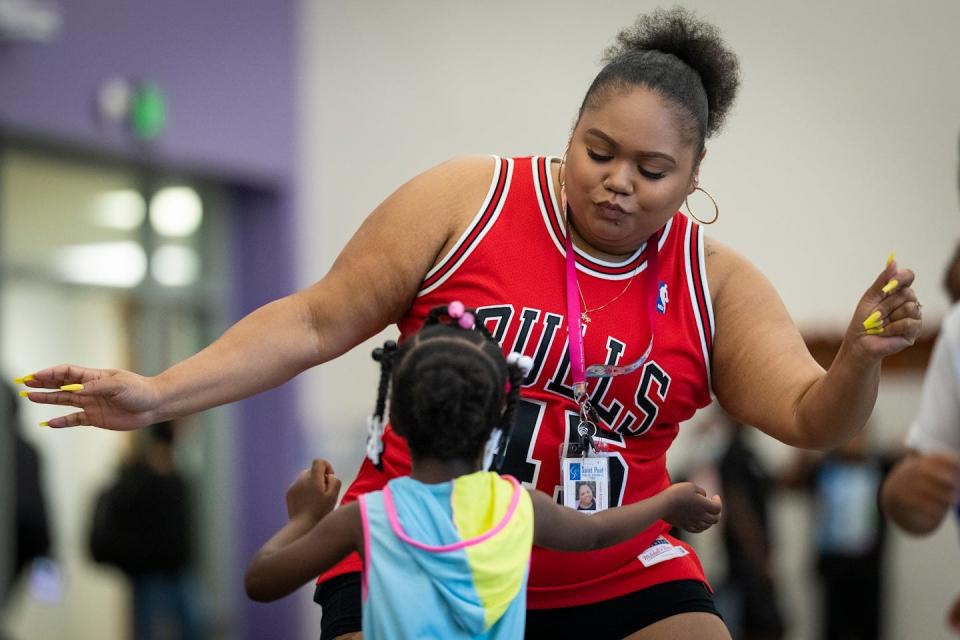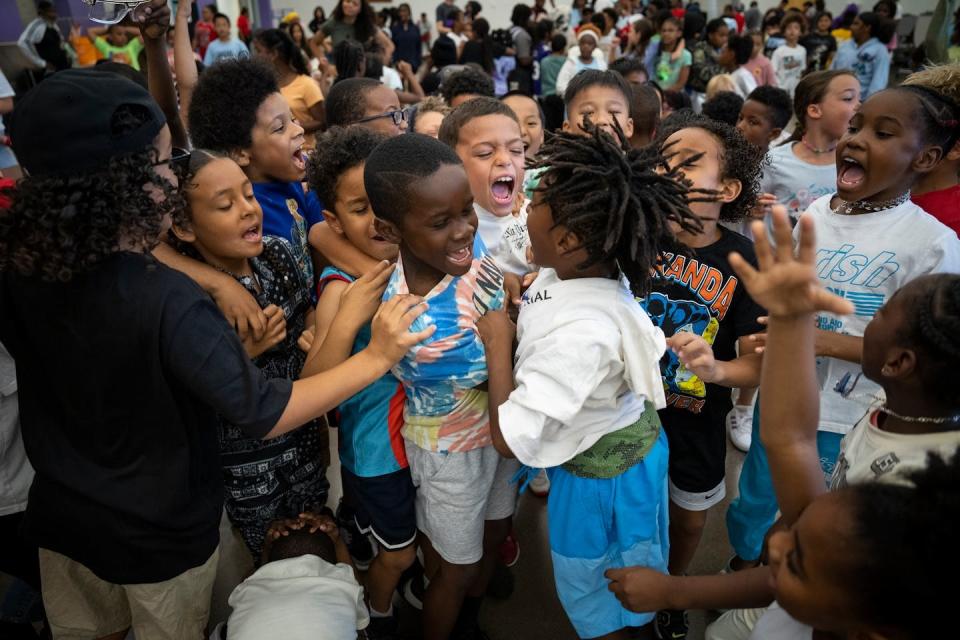St. Paul deepens cultural curriculum offerings with plans for Afrocentric school
A new Afrocentric learning program is in the works at St. Paul Public Schools, and its seeds are on display at LEAP High School on the city's East Side.
There, the district is hosting Freedom School, a six-week summer literacy program rooted in the civil rights movement and where mornings begin with dance and chants — even some "Hallelujahs!" On Thursday, Jasmine Epps-Flowers, a former Freedom School teacher, read a poem reminding students of the power of words in fighting hate and suffering. It ended with the simple phrase: "Poetry is what I use to say I love you."
St. Paul, the state's second-largest district, has long recognized its diversity — dual-language programs are among its most popular. But the district has picked up the pace of new offerings in recent years with moves designed in part to reclaim market share lost to charter schools that often cater to families of specific backgrounds and offer culturally specific environments.
After embracing Native American culture and the Karen language, and opening an East African elementary school, the district is answering the call of Black leaders and community members who've said: "Now it is our turn."
It also is giving a boost to its other cultural initiatives, as is neighboring Minneapolis Public Schools, which faces many of the same enrollment pressures. Students of all backgrounds are welcome in their programs.
This fall, St. Paul's East African magnet school in Frogtown will introduce every student to the Somali and Arabic languages, and high schoolers districtwide will have access to new Somali language courses. A new Karen culture and language program also will debut at Wellstone Elementary on the North End.
In Minneapolis, the school board recently gave its blessing to a quest by staff, students and community members to find Anishinabe Academy, which now serves Native students in a shared space, its own home.
"Our Indigenous students have been harmed, have been misplaced, and this is going to be an incredible vision," Minneapolis School Board Member Adriana Cerrillo said then. "We have to celebrate; we have to cherish moments like this, and we have to be loud. We have to tell the community: 'This is awesome.'"
In St. Paul, the East African magnet elementary exceeded enrollment projections almost immediately, but dropped in the fall and then rebounded to nearly 220 students by year's end. Envisioned as a school with grades pre-K through eighth, it will add sixth grade this fall, and seventh and eighth grades in successive years.
The district already had elementary schools with special culture and language programs, including Mandarin, Spanish and French immersion schools, and Txuj Ci HMong Language and Culture, a dual-campus magnet focused on Hmong studies. Altogether, those schools serve more than 2,450 of the district's approximately 33,500 students.
"We are providing a lot of culture ... and that's what we need to really engage students," School Board Member Chauntyll Allen said this month as she and her colleagues endorsed efforts to bring a new Afrocentric focus to Benjamin E. Mays elementary beginning in 2025-26. Freedom School, with its boisterous morning assemblies and culturally relevant reading materials, is expected to serve as a model.
Myron Orfield, a University of Minnesota law professor and director of the school's Institute on Metropolitan Opportunity, said emulating charter schools with their culturally affirming programming can lead to an over-concentration of poor, single-race student bodies and abysmal test scores.
"But both of the cities have to do it. If they don't engage in this race to the bottom, they lose money," he said.
He added: "We have a segregation machine that we've created in the state of Minnesota, and it's at the core of all racial inequality in the Twin Cities."
The enrollment of Anishinabe Academy in Minneapolis is 80% Native American, and less than 10% of the students tested as proficient in reading and math in 2023, according to state data.
A model for success?
St. Paul's multicampus Freedom School operates on a smaller scale: It is part of a national program developed by the Children's Defense Fund to stop the summer reading slide.
In 2023, the school reported success in meeting its summer attendance and reading retention goals, according to a year-end report. Eighty-four percent of students maintained or improved their reading levels. At the time, the school served about 800 kids; nearly half were Black and 8% were white.
Freedom School initially was overseen by the St. Paul Area Council of Churches, which has since changed its name to Interfaith Action of Greater St. Paul. But the school district, impressed by the performance of students when they returned in the fall, agreed to take it under its umbrella in 2013, said Darcel Hill, executive director of the district's Children's Defense Fund Freedom Schools.
"Let's pull together," which translates to "Harambee" in Swahili, is the spirit that drives the morning assemblies. At Leap High last week, on "Throwback Thursday," many students and staffers wore vintage NBA jerseys, and as they left the morning assembly, site leader Corey Frazier cranked up "My Adidas" by Run-D.M.C. He was sporting an Adidas T-shirt, and Marcus Freeman, the site administrator, wore Adidas shoes.
"We make a mean team," Frazier said, echoing the song's lyrics.
This fall, Frazier and Freeman will join with Hill as part of the Benjamin E. Mays planning effort. Hill is eager to testify to the success of the Freedom School format: "They always say, and it's true: 'You work the model, the model works.'"
Staff writer Anna Colletto contributed to this story.


